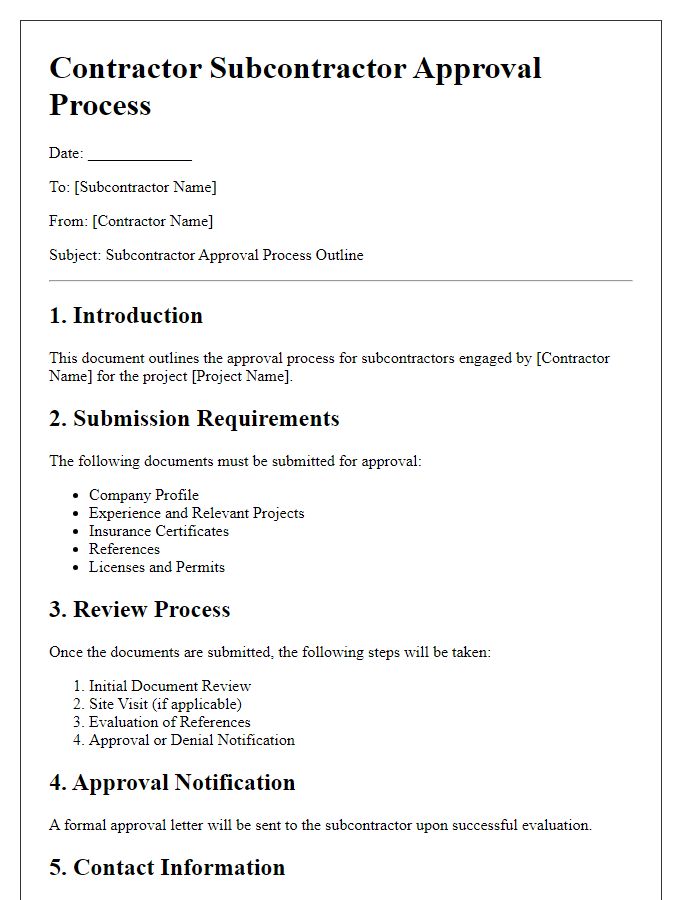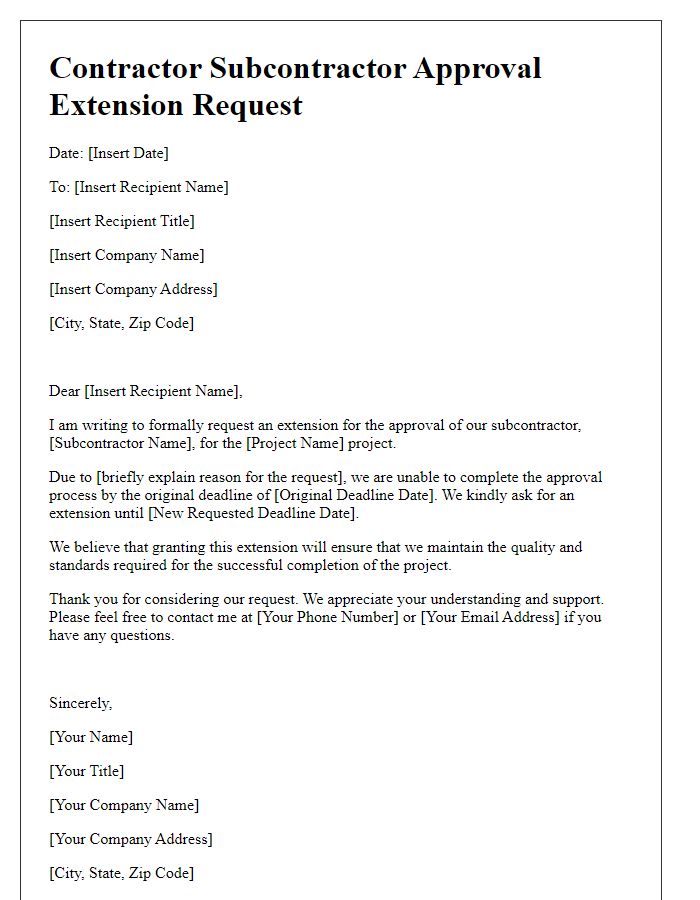Are you a contractor in need of a reliable subcontractor but unsure how to navigate the approval process? You're not alone! Many professionals face the same hurdle, and understanding the key components of a subcontractor approval letter can make all the difference. Ready to streamline your approach and ensure a successful collaboration? Read on for valuable insights and tips!

Project Details
Project details for contractor-subcontractor approval include essential information such as project name, location, start date, and expected completion date. This construction project, for example, is situated in downtown Chicago, Illinois, aimed at developing a 12-story mixed-use building, set to commence on June 15, 2024, with a projected finish by December 2025. Key stakeholders, including the general contractor ABC Builders and the subcontractor XYZ Electrical Services, play crucial roles in ensuring project milestones are met. Project specifications outline requirements like electrical installations following National Electrical Code standards and a budget allocation of approximately $1.5 million for subcontracted work, emphasizing the importance of timely approval for seamless operations.
Subcontractor Information
The subcontractor information process is critical for construction projects, ensuring efficient workflow and compliance with quality standards. Essential details include the subcontractor's legal name, registered business address, and contact information (telephone and email). Important documents consist of a valid business license, proof of liability insurance coverage (typically up to $1 million for general liability), and any necessary certifications (such as OSHA training) that comply with local regulations. Additionally, prior project experience (including references from construction projects completed in the last five years) is needed to evaluate capabilities. This assessment will help ensure the subcontractor's reliability and expertise contribute positively to the main contractor's project objectives.
Scope of Work
Subcontractor approval processes typically involve formal documentation detailing specific tasks. The Scope of Work (SOW) outlines the responsibilities assigned to contractors. For construction projects, the SOW can define tasks such as site preparation, materials procurement, or specific trades (like plumbing or electrical installation). Precise definitions within the SOW clarify deadlines, quality standards, and compliance requirements with safety regulations (e.g., OSHA standards in the United States). Key performance indicators (KPIs) measure milestones, ensuring timely completion and adherence to budget constraints. Documentation should include eligibility verification for subcontractors, aligning with local licensing requirements and insurance obligations to mitigate risk.
Compliance Requirements
Compliance requirements for contractor subcontractor approval involve adhering to industry standards and regulations. Essential documentation includes a valid contractor's license and proof of insurance coverage, such as general liability and worker's compensation. Certification of safety programs may be necessary, reflecting adherence to Occupational Safety and Health Administration (OSHA) guidelines. Subcontractors must provide a detailed scope of work, aligning with project specifications. References from previous clients (typically within the last three years) will enhance credibility and indicate reliability. Financial stability evidence, such as balance sheets or tax returns, ensures the subcontractor can fulfill contractual obligations. All compliance documents typically require submission at least two weeks before project commencement to allow for thorough review.
Approval Conditions
Approval conditions for subcontractors in construction projects often include compliance with safety regulations, adherence to project timelines, and possession of necessary licenses and insurance. Each subcontractor must demonstrate competency through previous work history, often evidenced by references from past projects. Required documentation includes proof of liability insurance coverage (often ranging from $1 million to $5 million), worker's compensation insurance details, and any relevant certifications for specialized trades. All funds and pricing agreements should be outlined clearly to avoid misunderstandings, typically adhering to the budget set forth by the primary contractor. Additionally, subcontractors may be required to submit a detailed scope of work, which specifies duties, deliverables, and materials to be used, ensuring alignment with the overall project objectives. Submission deadlines for necessary documentation might be stipulated as well to maintain project workflows and schedules. Compliance with local labor laws and regulations is imperative, ensuring fair practices in hiring and work conditions.













Comments